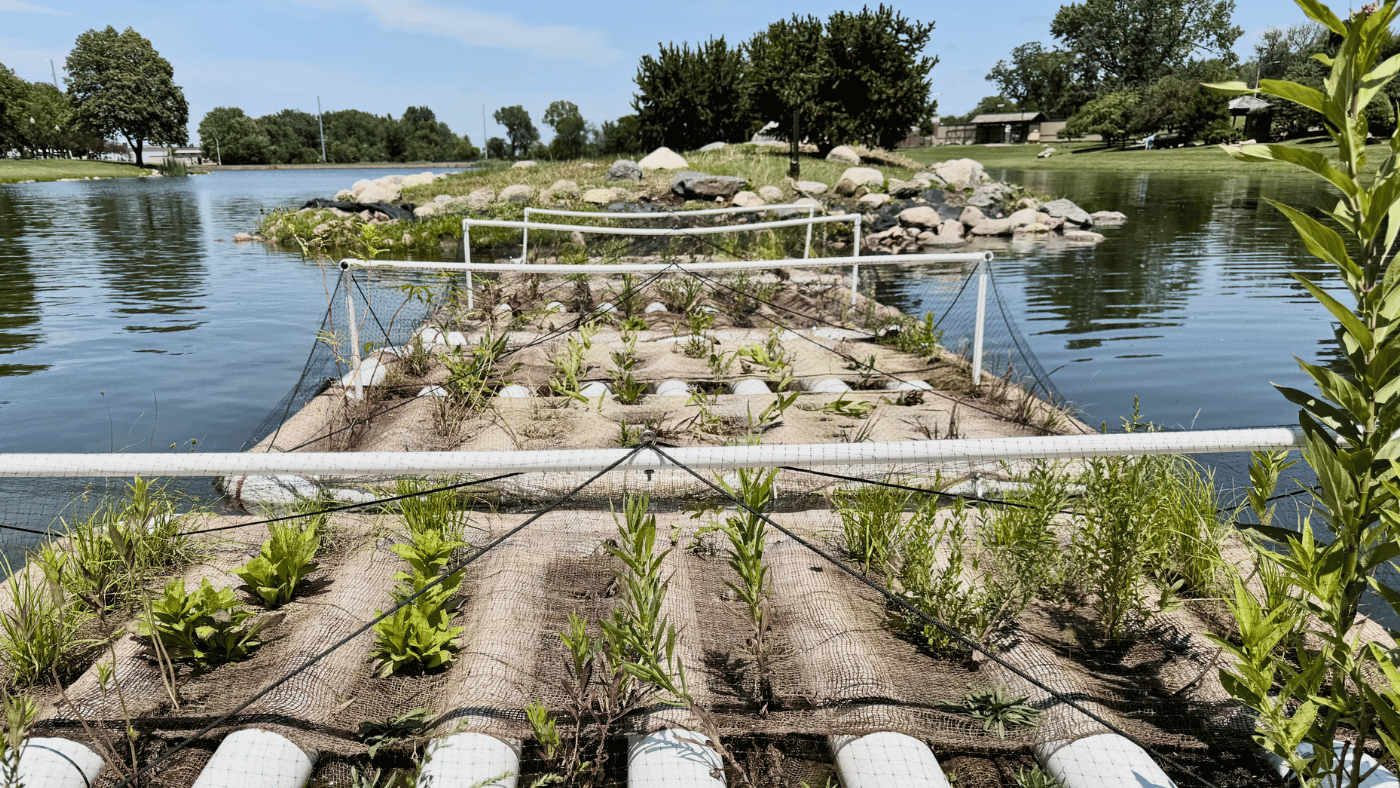
Floating Islands
Friends of the Big Sioux River and CNH Industrial’s Sioux Falls Sustainability Committee are proud to partner on a unique project that supports local biodiversity and waterway health — floating eco-islands!
These innovative structures at Covell Lake nurture native plant growth, attract local wildlife, and enhance water quality. They are a testament to both organizations’ care for the local Sioux Falls ecosystem and their commitment to making a positive impact on the environment for future generations.
Read on to learn how these structures came to be and how they can benefit the environment!
What Are Floating Islands?
Floating eco-islands are sustainable, constructed wetlands that consist of a platform base filled with native plants. Once placed in a waterbody, the plants’ roots help filter and clean the water, create habitats for aquatic species, and add biodiversity to an urban river setting.
The floating islands will positively impact Covell Lake and the surrounding wildlife by:
Increasing biodiversity
Creating protected areas for wildlife to live and breed
Nourishing a root system to house spawning fish and filter the lake water
Providing native flowers and plants for pollinators
Improving water quality
Adding beauty to Covell Lake for all visitors to enjoy
The Design Process
While scrolling through social media one day, FBSR Executive Director, Travis Entenman, saw a post from Urban Rivers promoting the Chicago Wild Mile, the world’s first ever floating eco-park. Inspired by their work, Travis set out to bring this novel idea to the Big Sioux River watershed. The FBSR team knew this wasn’t a project they could tackle on their own — they needed funding and the assistance of some knowledgeable engineers. That’s where CNH Industrial’s Sioux Falls Sustainability Committee came in!
After hearing about FBSR’s idea, CNH engineers Sienna Mayer and John Waltz were completely on board. John and Sienna presented a couple of design ideas along with an itemized list of supplies to the global CNH Sustainability leadership team for their consideration. Upon receiving a commitment of funding, the partnership was on to design, build, and install the floating islands.
Following extensive research and design calculations, the final prototype consisted of 4-inch PVC pipes glued together to form four 6’ x 7’ structures. Each island frame was estimated to support a dry weight of approximately 800 lbs. Coco coir—a natural fiber extracted from coconut husks—was wrapped in burlap fabric and placed between each set of PVC pipes to serve as a growing medium for the plants while they become established. As the plants grow, their roots will begin to dangle below the island panels, and they will receive the necessary nutrients from the water.
Click through the pictures below to see the floating island structures come to fruition!
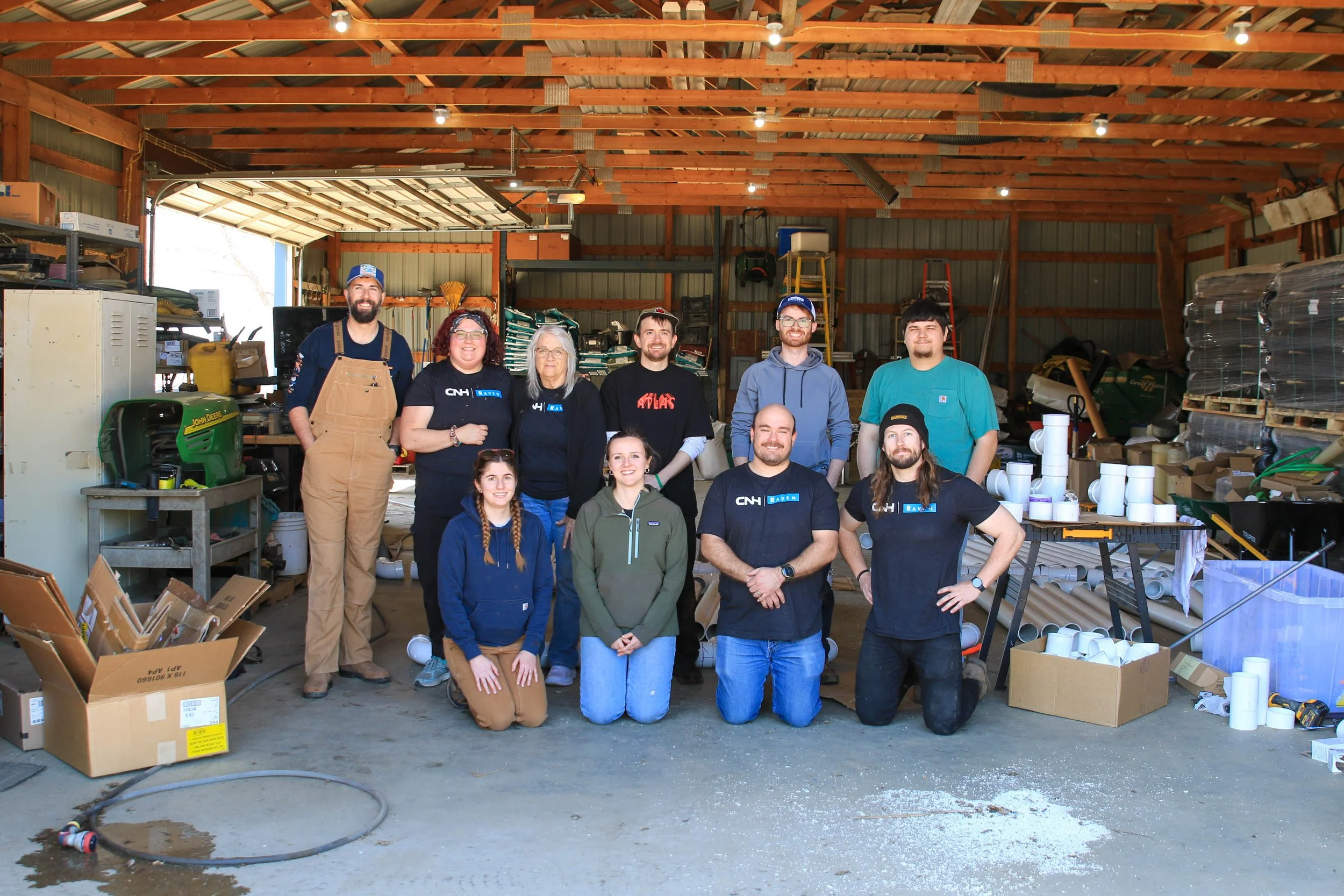
The Floating Island Build Team
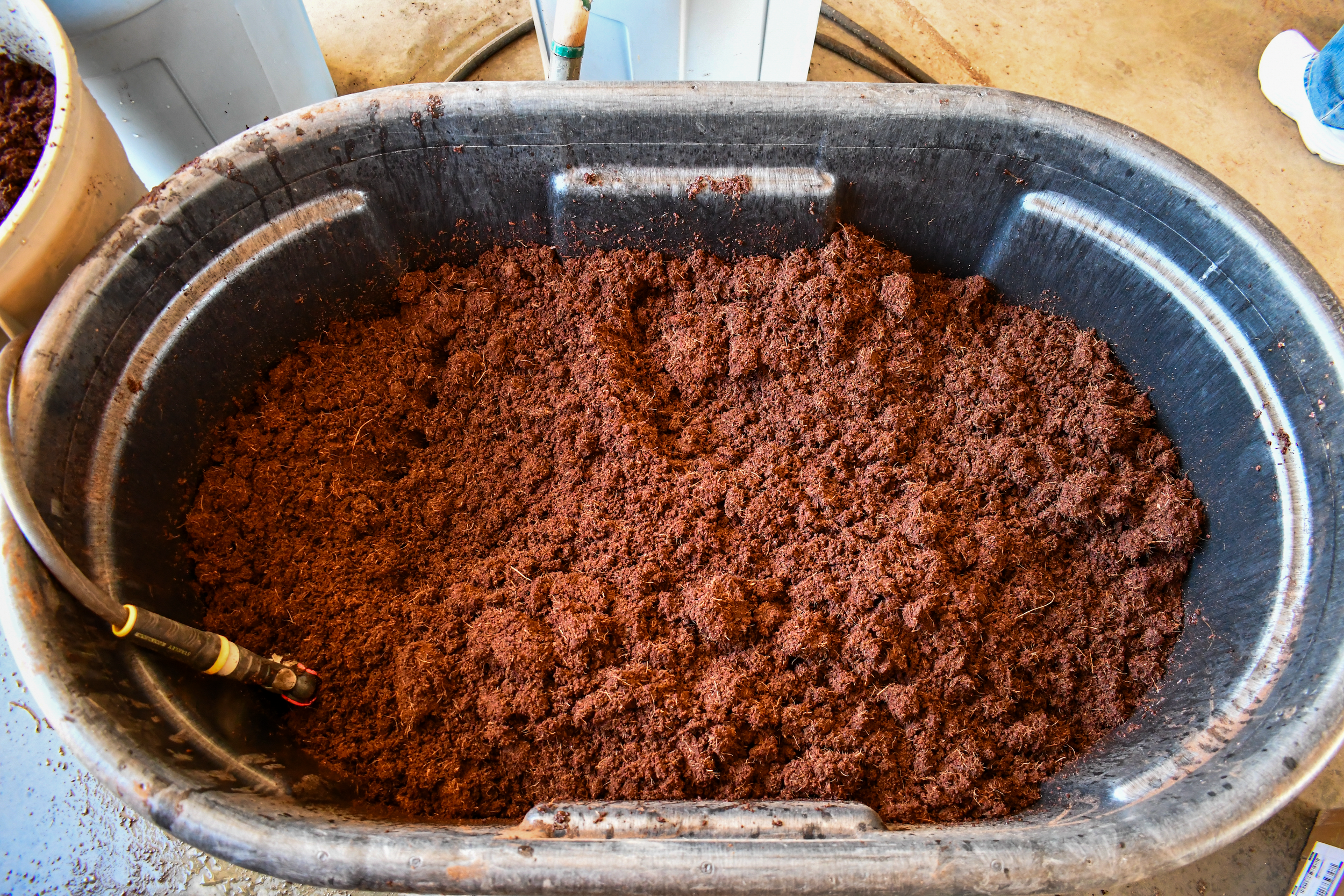
Preparing the Coco Coir
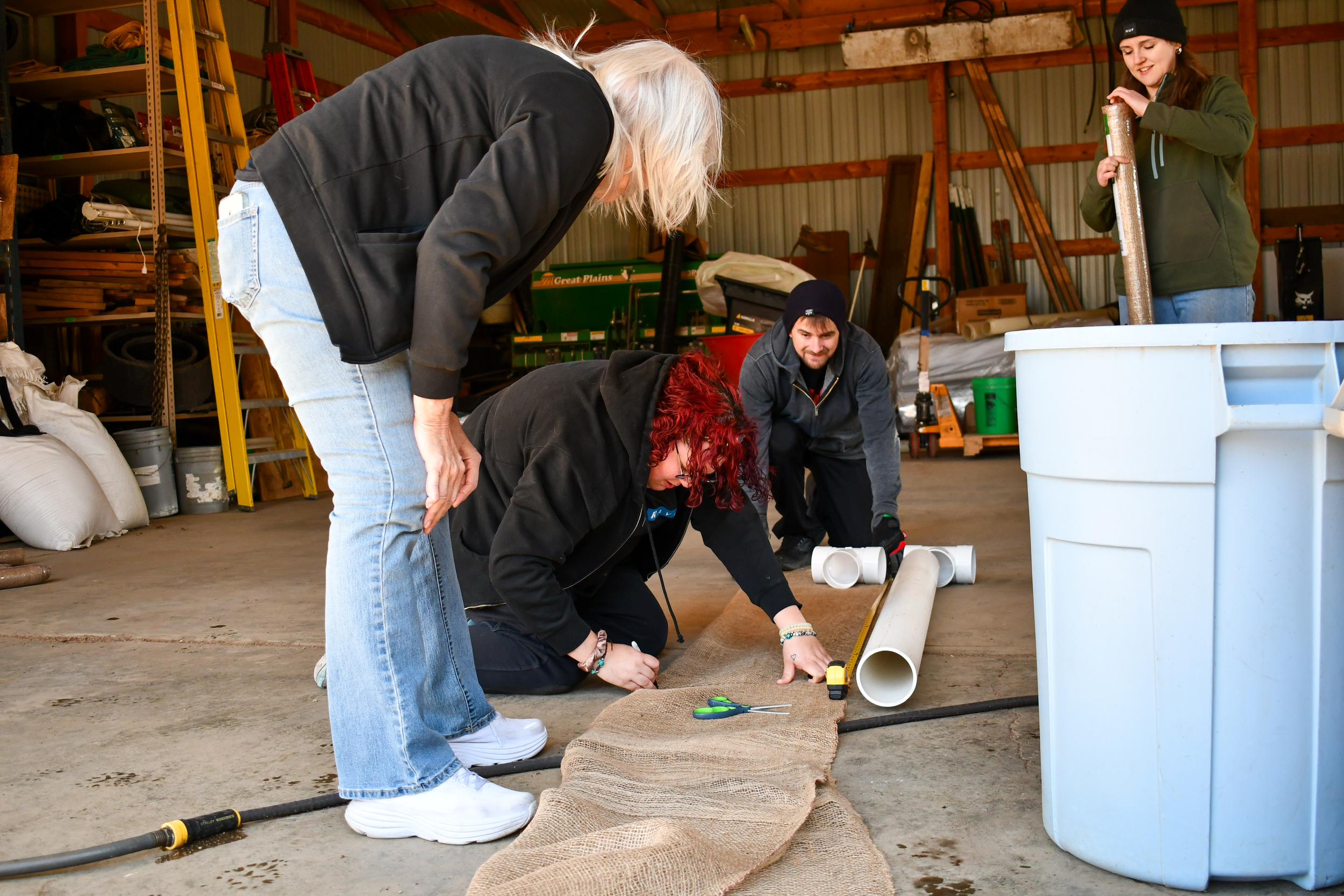
Preparing the Burlap Sacks
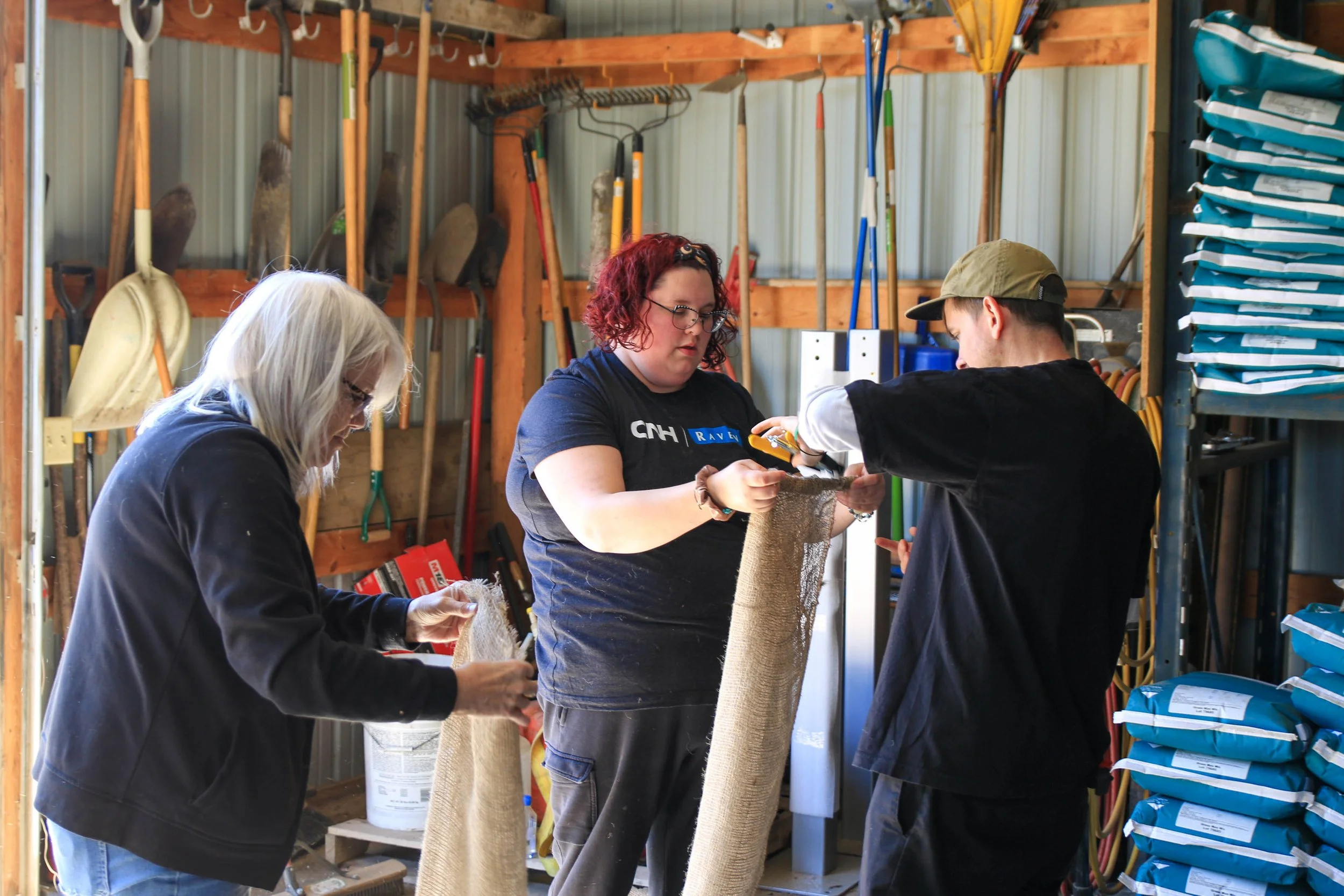
Preparing the Burlap Sacks
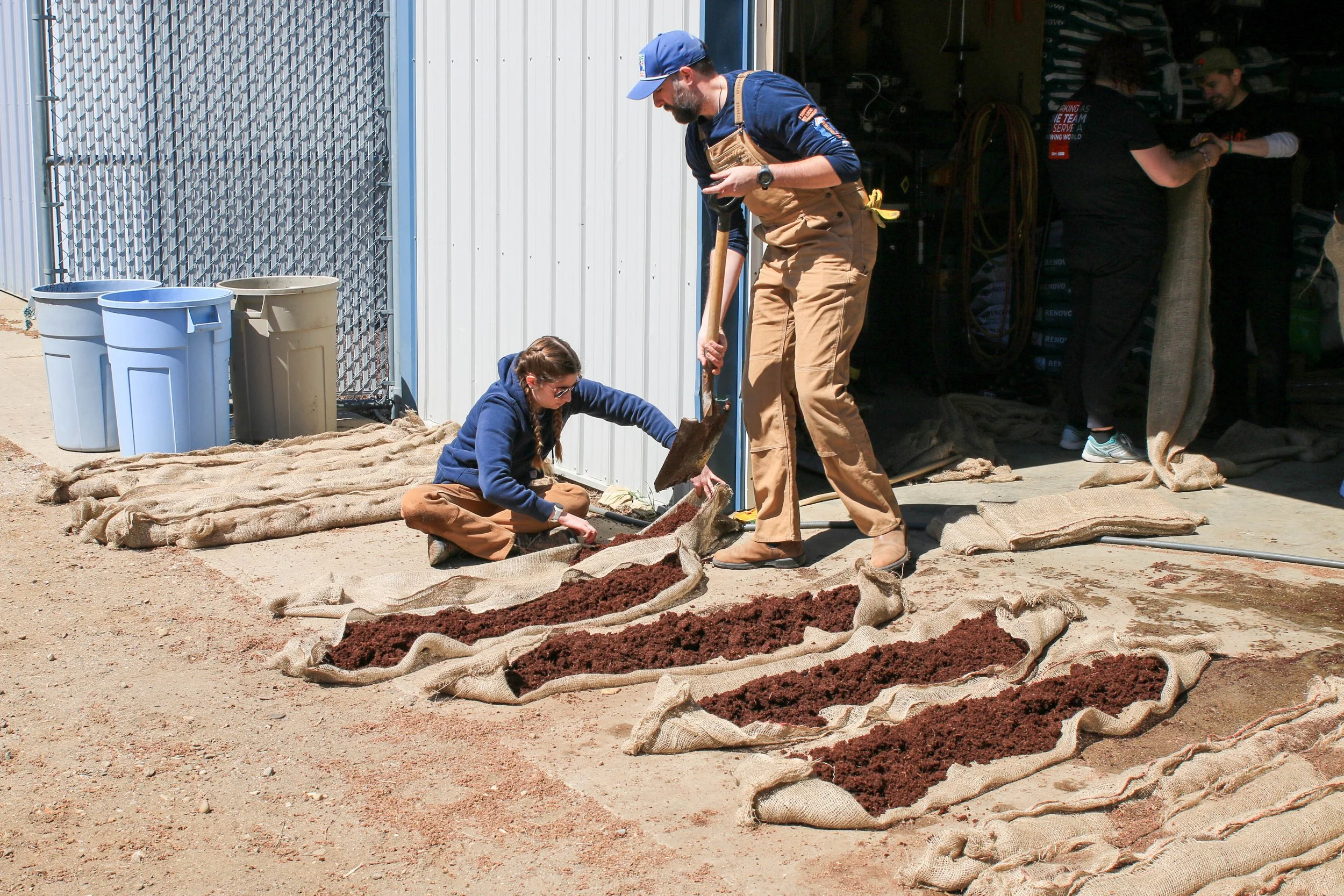
Scooping the Coco Coir into the Burlap Sacks
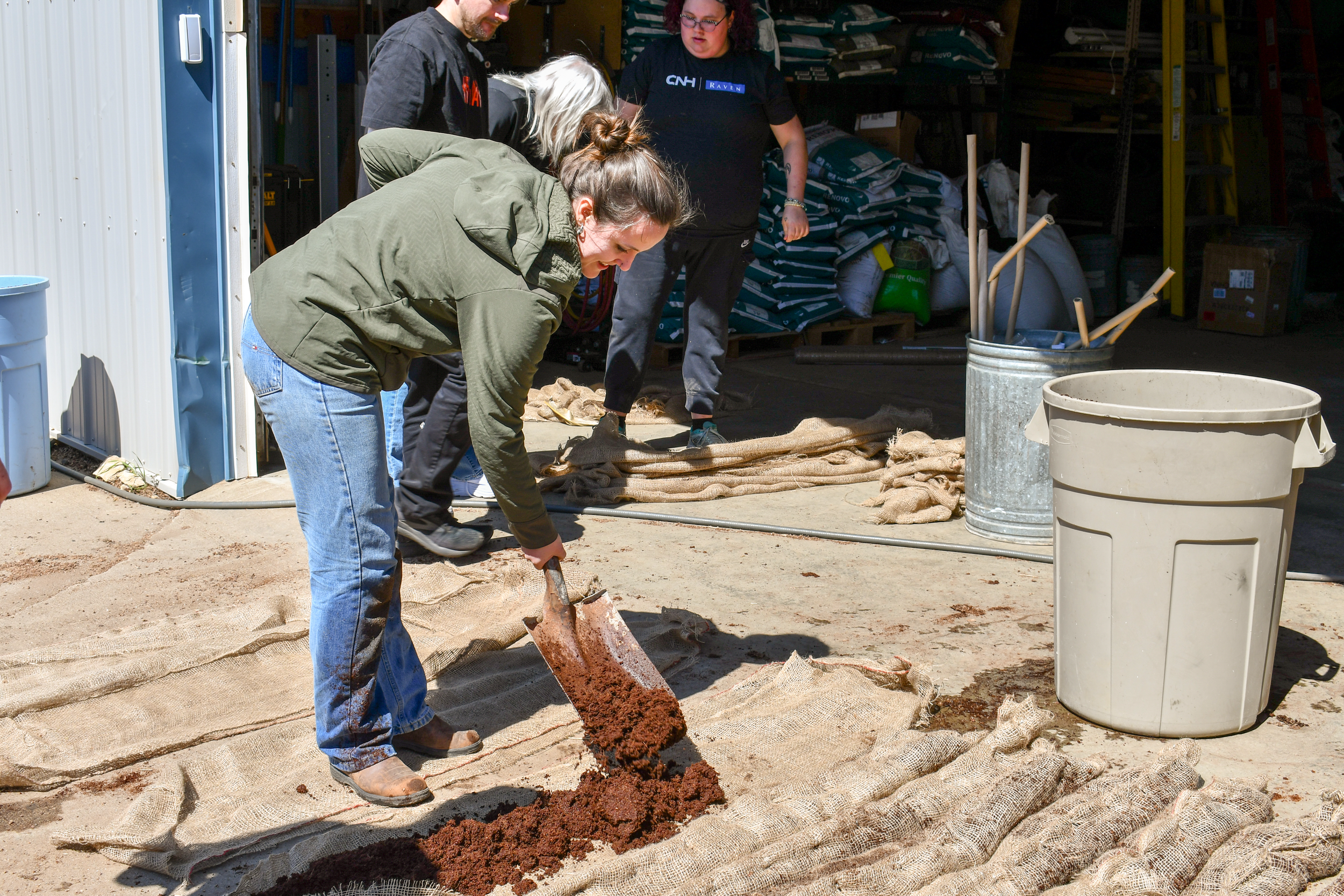
Scooping the Coco Coir into the Burlap Sacks
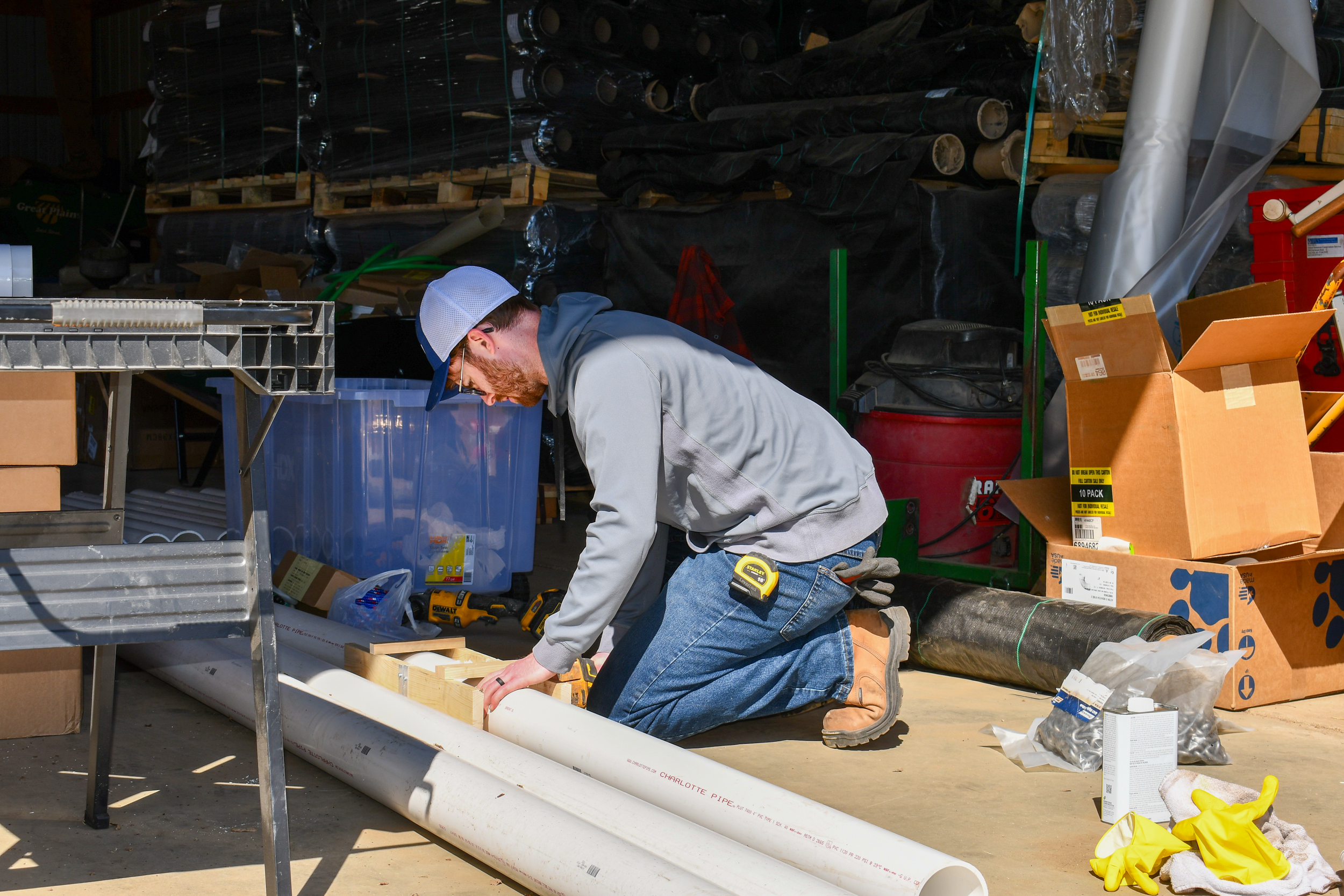
Cutting the PVC Pipes to Length
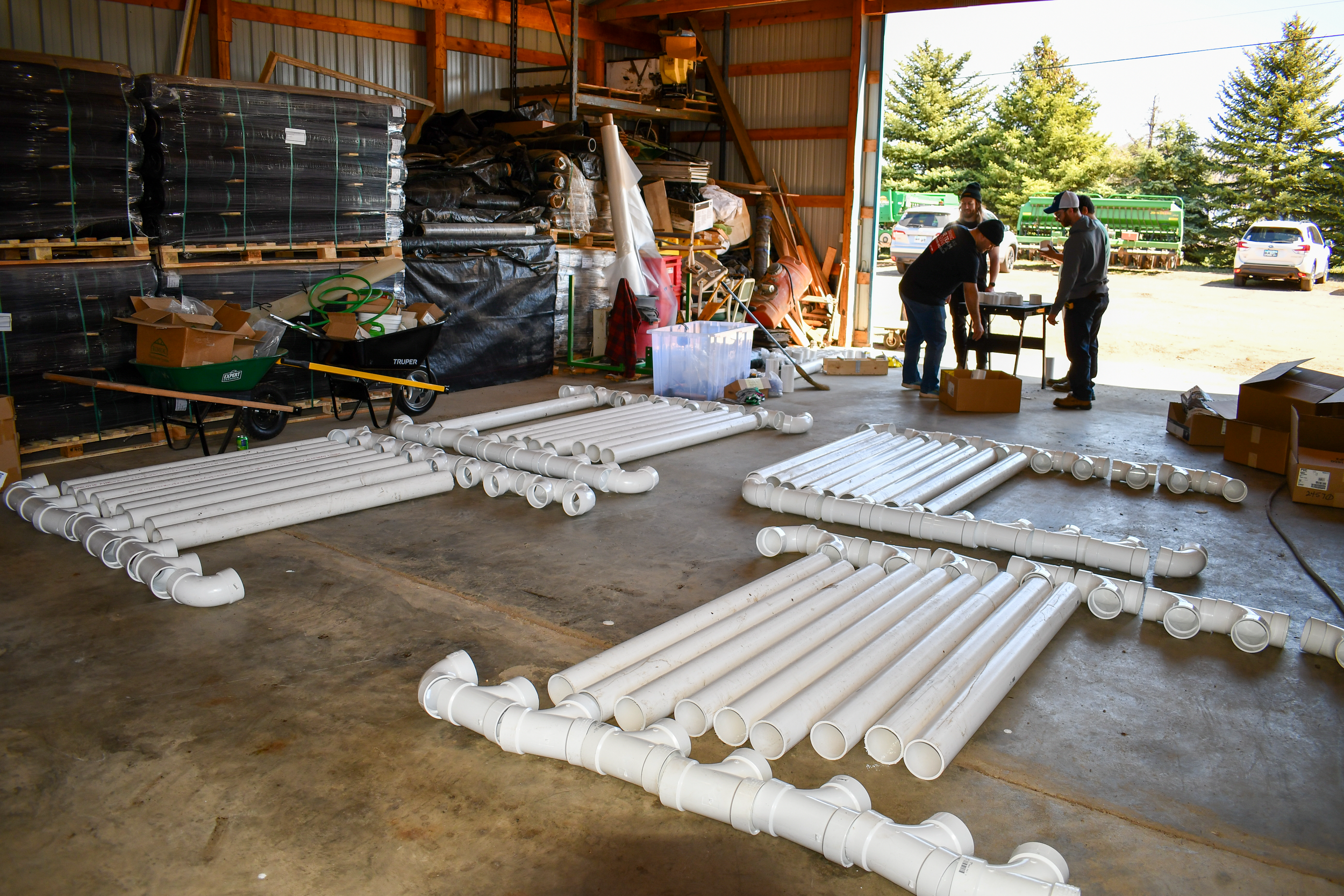
Frames Laid Out for Construction
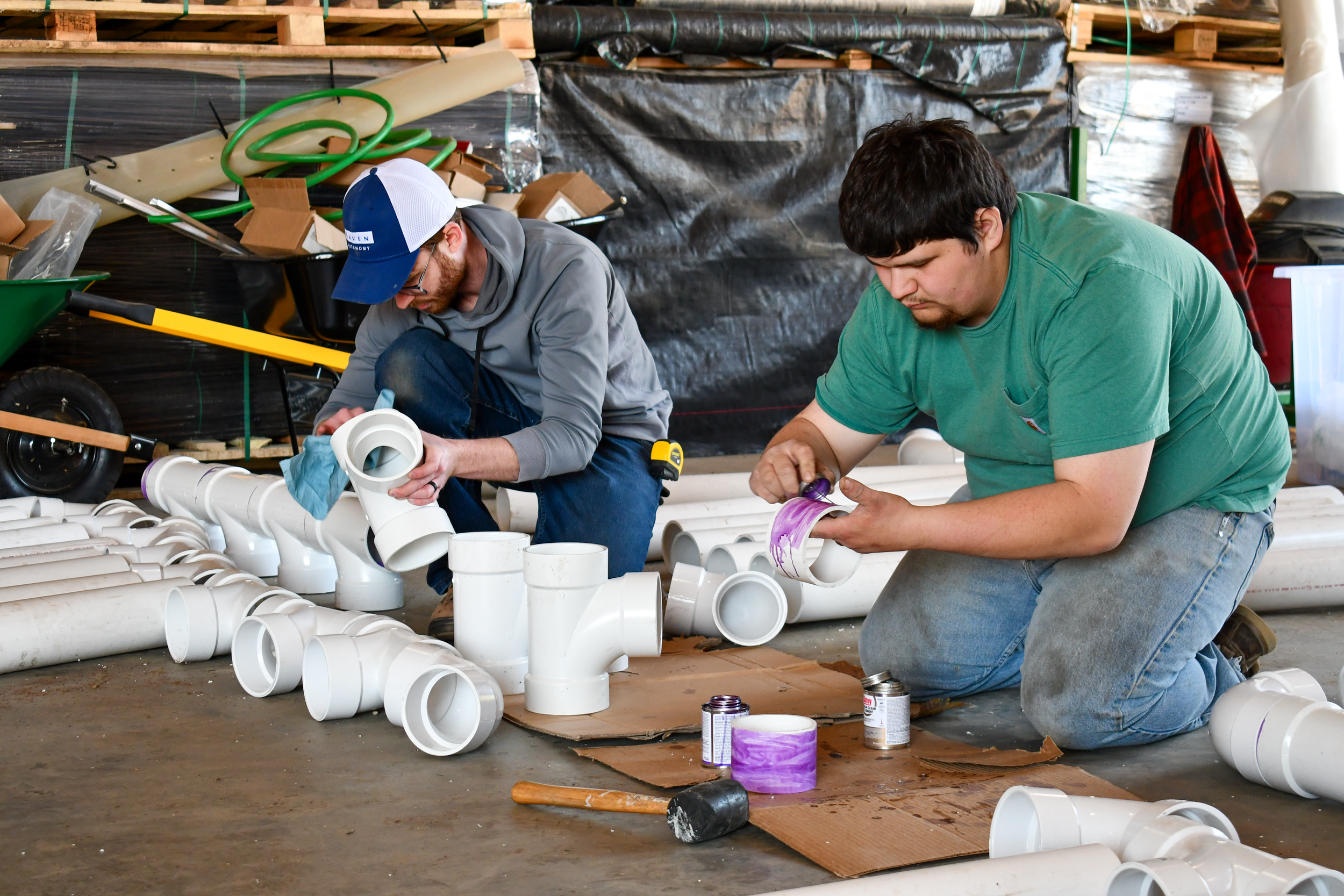
Gluing the PVC Together
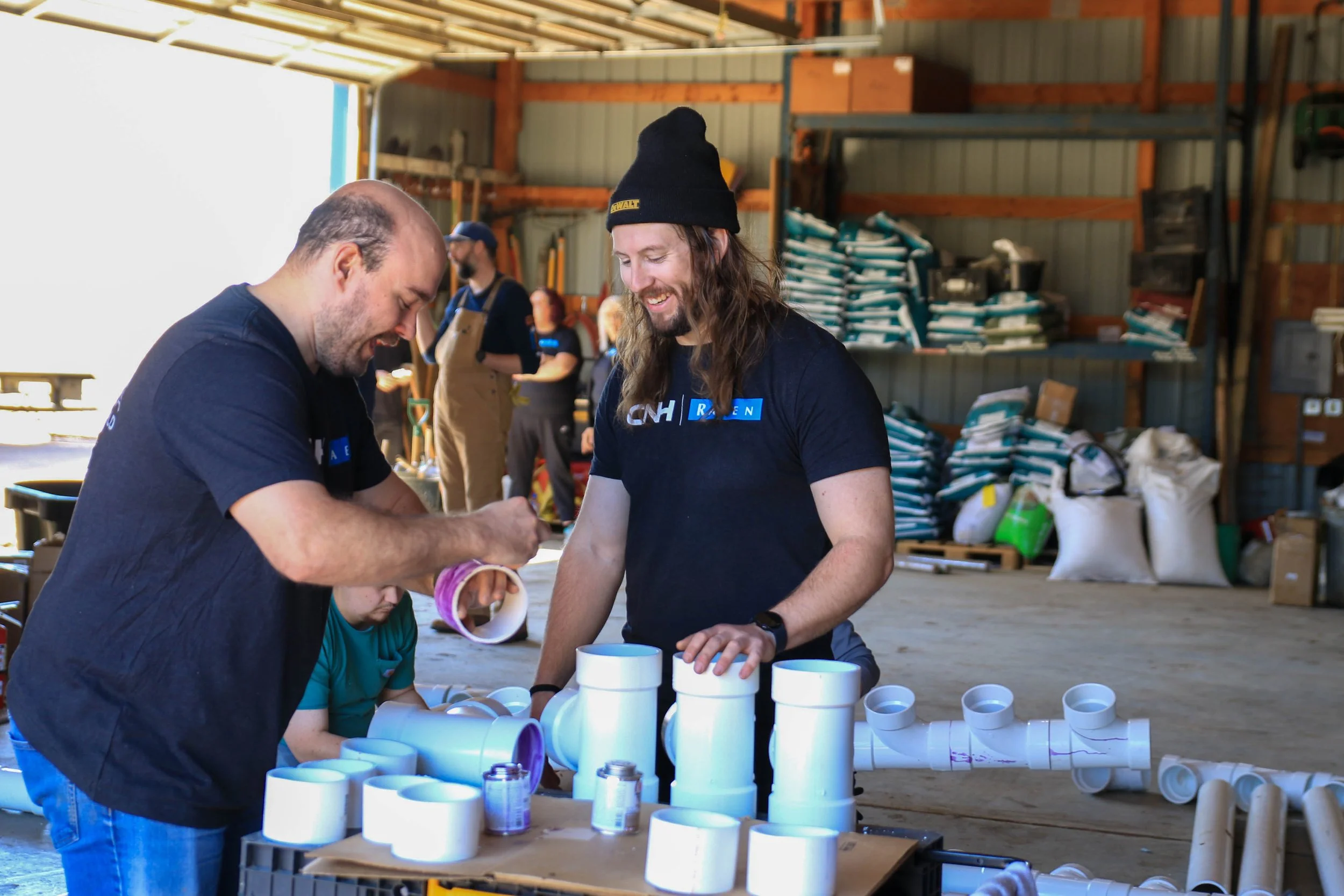
Gluing the PVC Together
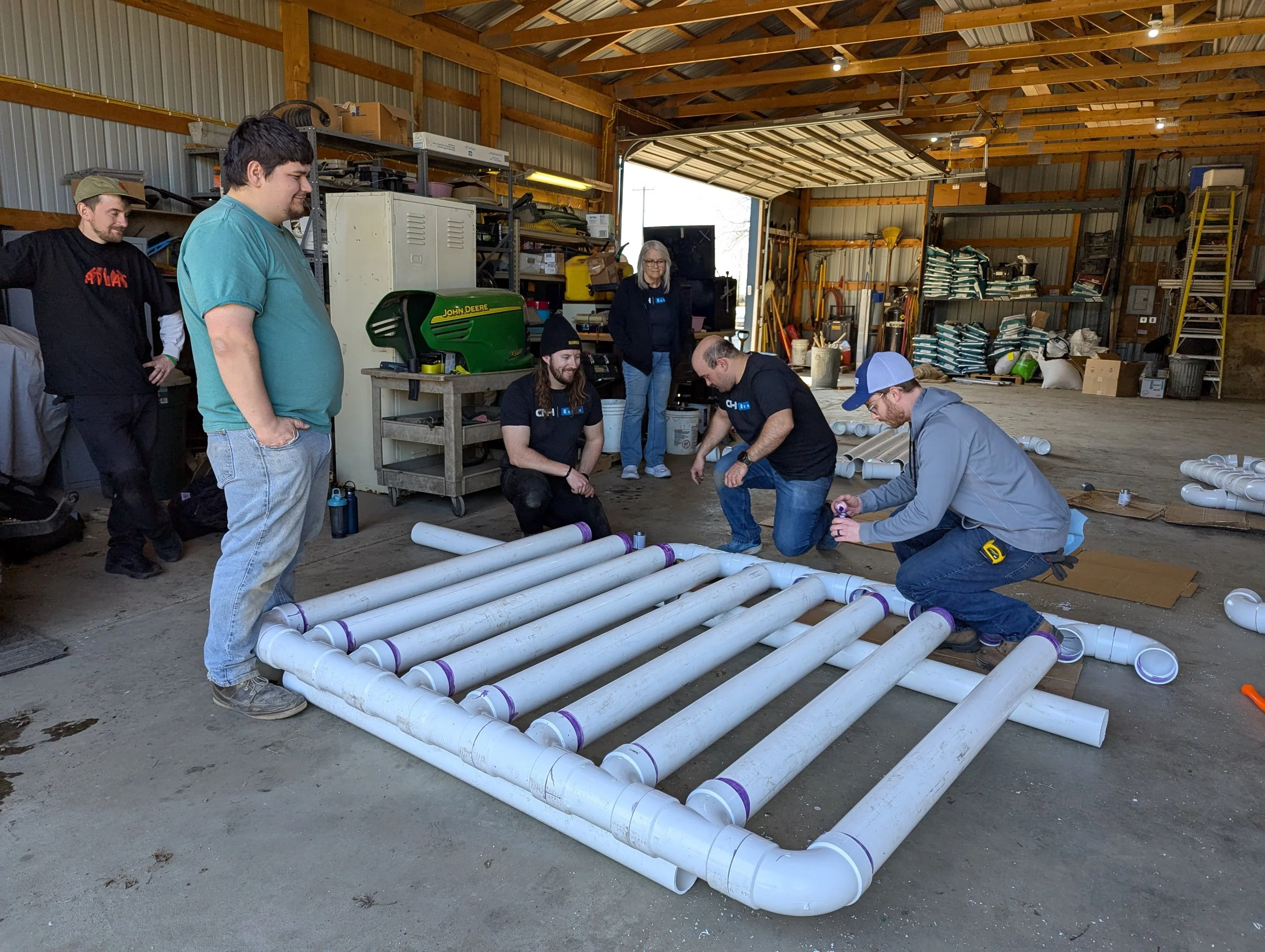
Constructing the Frame
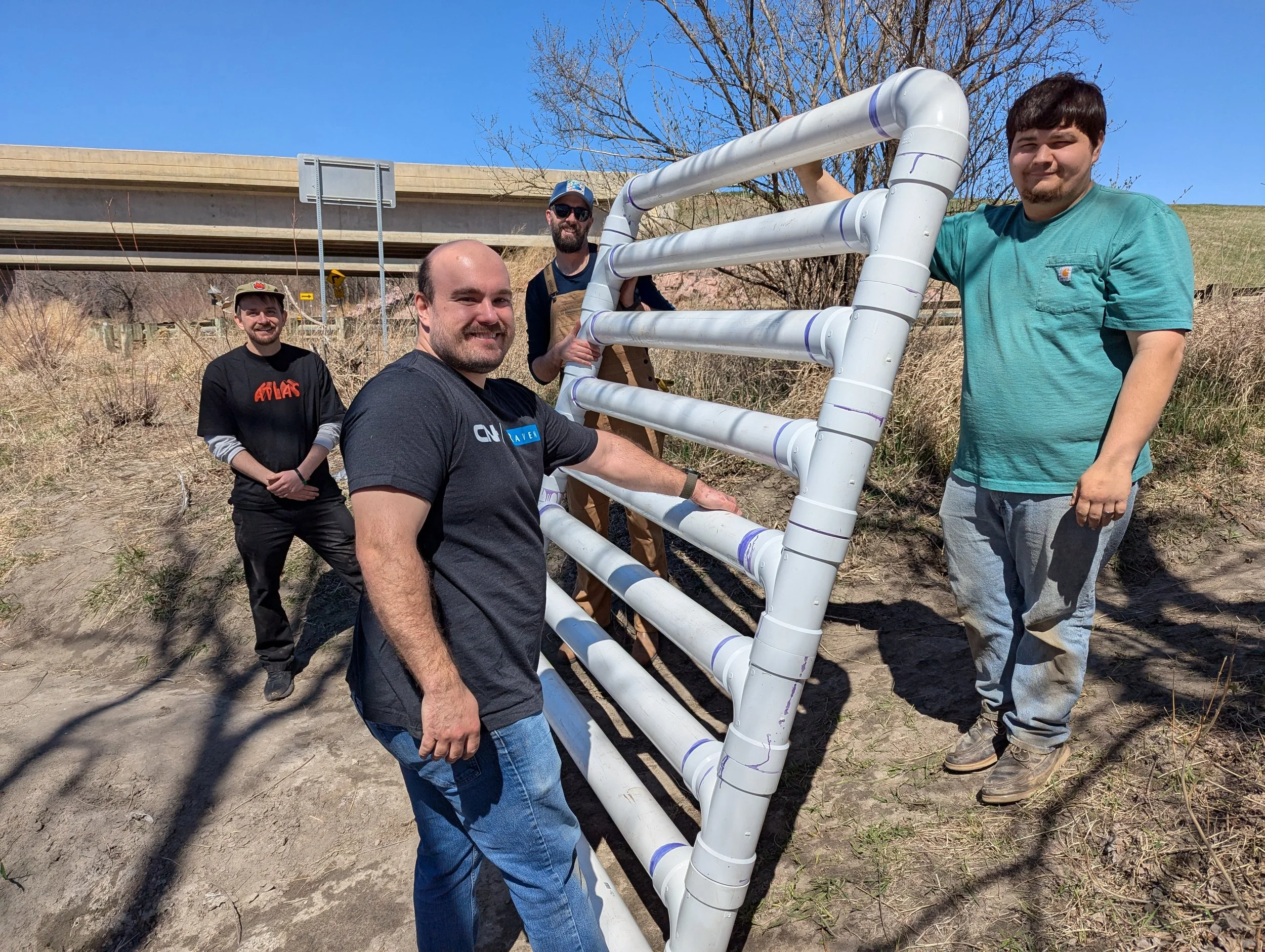
Getting Ready for the Float Test
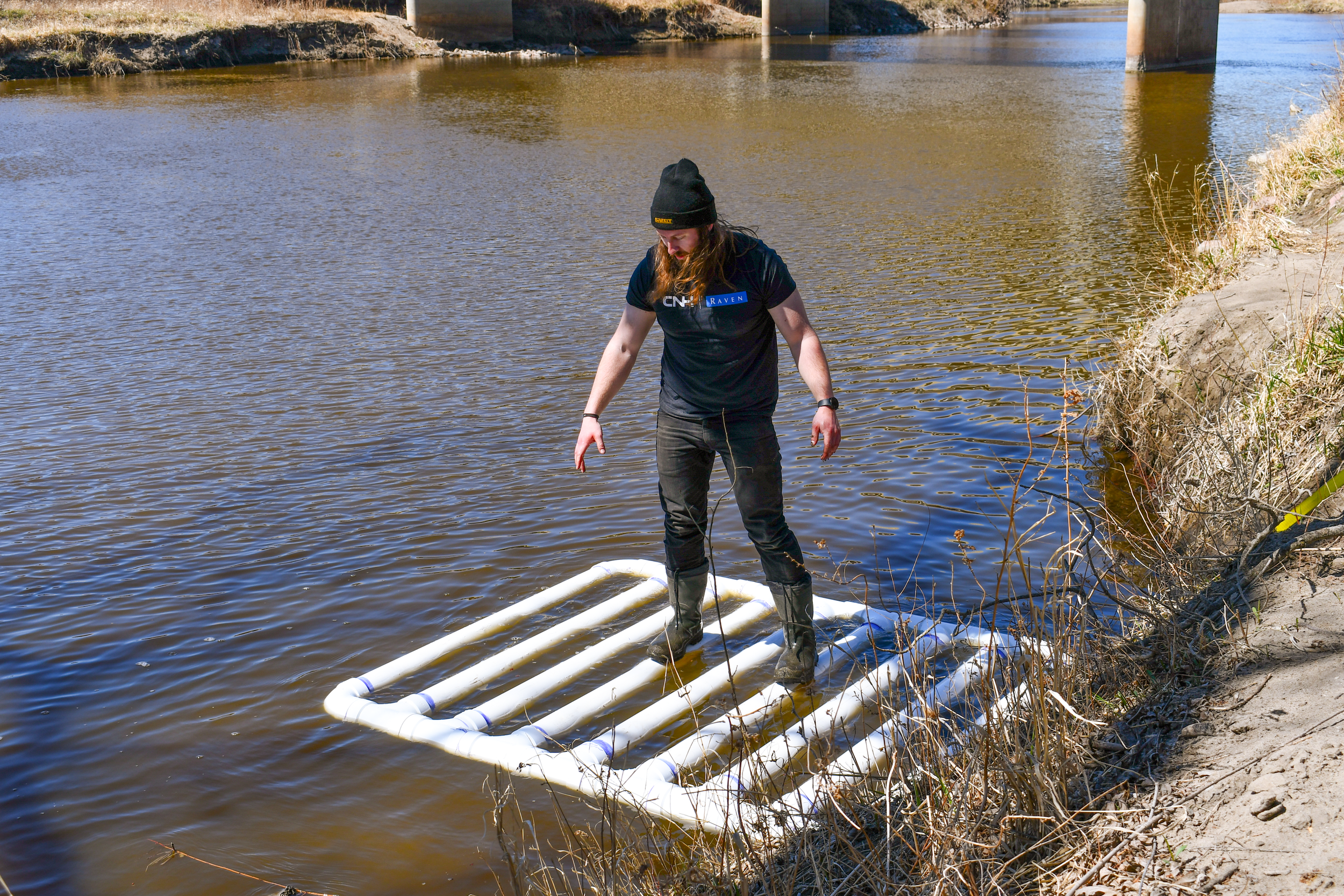
It Floats, and It Holds John!
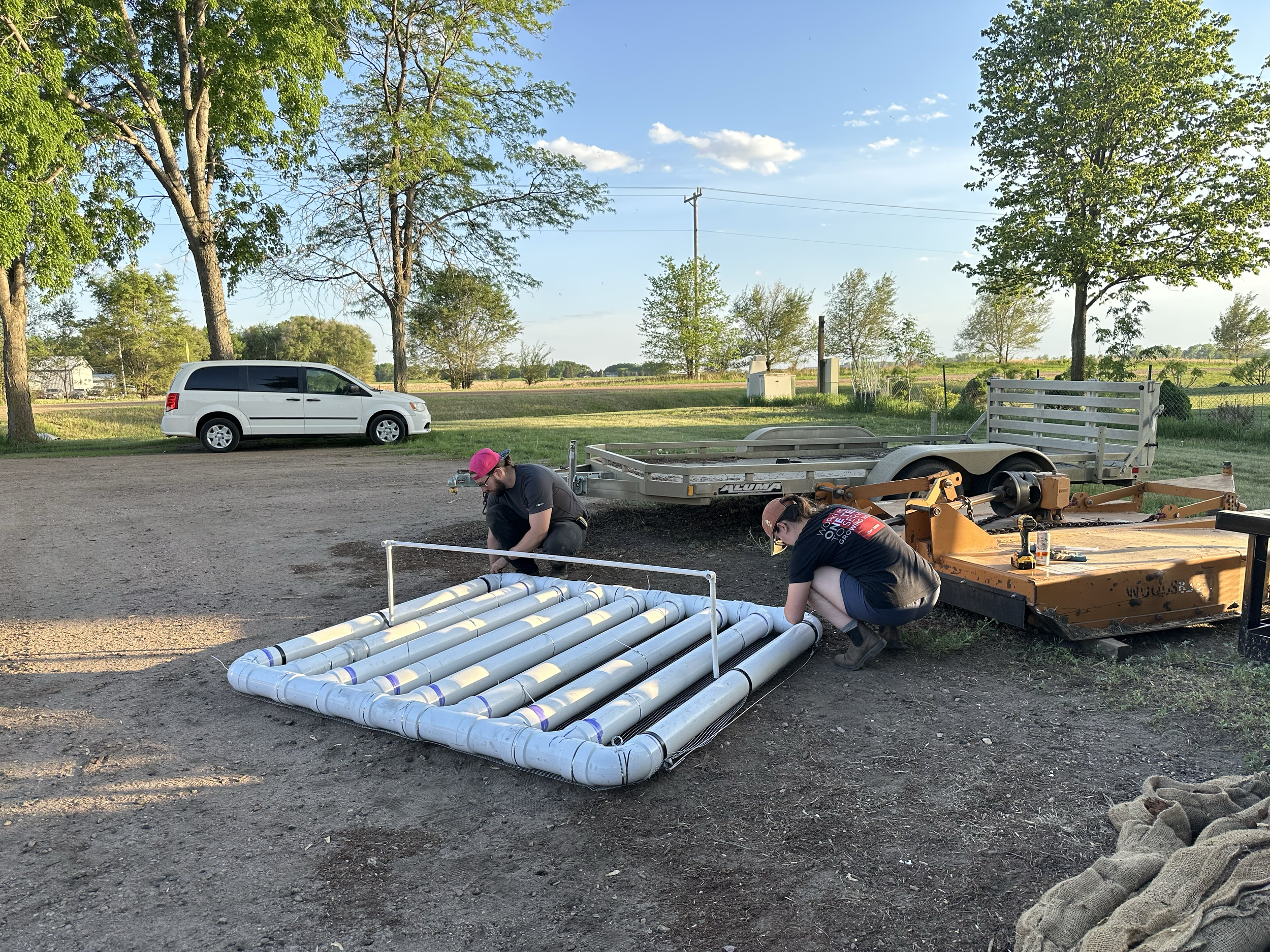
Adding Wire Mesh to the Bottom of the Frame
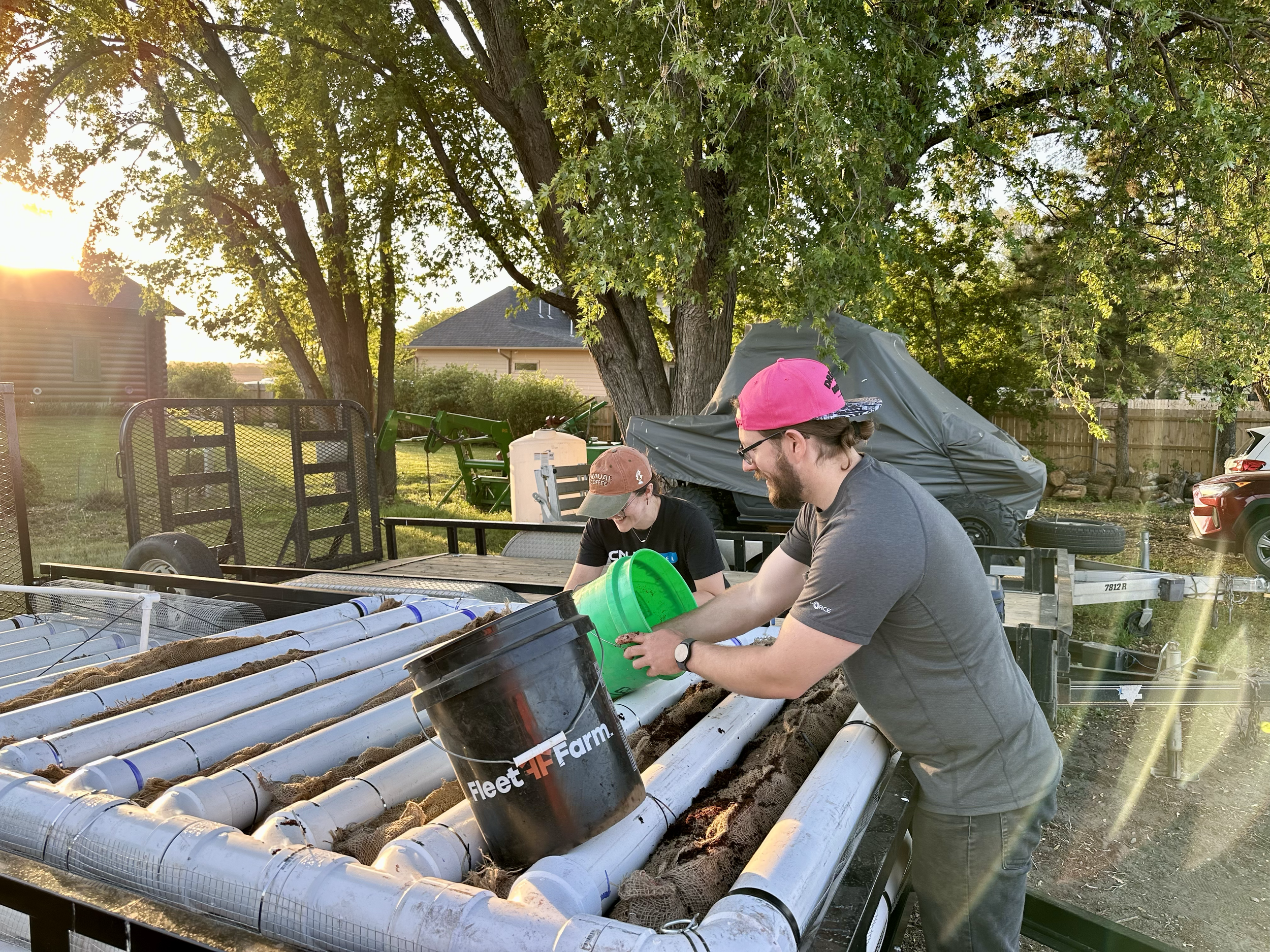
Placing the Burlap Sacks Inside of the Frames
How We Picked the Plants
In addition to designing and building the physical structure, the team needed to determine which plants to grow on the island. During the winter months, Emily Oyos with FBSR, started the plant research process with a few questions in mind:
Is the plant native to eastern South Dakota?
Does the plant attract pollinators?
Does the plant provide nesting habitat for waterfowl or other aquatic animals?
What is the height, bloom season, and bloom color for each plant?
What requirements does each plant have for spacing, sun, and soil moisture?
What plants have been used successfully in other floating islands in the Midwest?
Where can you order native plant plugs from in the Midwest?
After compiling a list of around 100 plant species, Emily began to place them in a virtual plot based on their varying growing requirements. Taller plants were placed in the middle, with shorter plants placed around the outside of each island. Two islands contained wetland-focused plants, while the other two islands contained prairie-focused plants. Both wetland and prairie plants have been found to grow well in floating islands in other areas of the Midwest.
At last, it was time to place the order for 288 individual plants comprising 38 different species. Native plants were sourced and purchased from nurseries in the Midwest, including Allendan Seed Company in Winterset, Iowa, and Prairie Moon Nursery in Winona, Minnesota. The plants arrived in May, just in time for the island installation scheduled for June. As part of the pilot project, the team hopes to test which species grow best under the given conditions. Check back for the results at the end of the year!
Curious which exact species were used in each floating island plot? Check out the pictures below to see the plot design.




Island Installation
After almost a year of planning, it was finally time to install the islands at Covell Lake! On Friday, June 6, 2025, the team came together to plant and float the islands. The native plants were carefully placed in the coco coir burlap sacks according to the planting plan. Bird netting was then placed over the top of each island to prevent ducks and geese from pulling up the plants while they become established.
It was then time for the true test: do the islands float when weighted down with water-saturated coco coir and native plants? To everyone’s relief, all four islands floated successfully! They were then floated down the lake and anchored to the bottom of the lake, as well as to one of the small natural islands across from the Terrace Park Japanese Gardens.
A trail camera was set up to observe the plant growth and wildlife happenings on the island at all times of the day. The FBSR team also regularly monitors the islands to ensure they remain in top shape. You can see some of the progress photos below!
Overall, this is an excellent example of environmental advocates and engineering experts coming together to enrich and sustain the Sioux Falls area’s natural resources and wildlife. Both organizations hope that these floating eco-islands not only directly impact water quality but also serve as an educational tool for the Sioux Falls community.
The next time you are at Covell Lake, make sure to check out these one-of-a-kind floating habitats!
What’s Next?
What’s next for the floating islands? The FBSR team will continue to monitor their success throughout the summer and fall. Based on the success of this pilot project, they hope to build more islands in the future.
Interested in donating, volunteering, or learning more? Reach out!
The entire floating island team is already thinking about ways to improve the design of future islands and potential locations for them, including in the Big Sioux River, so stay tuned for future island updates!
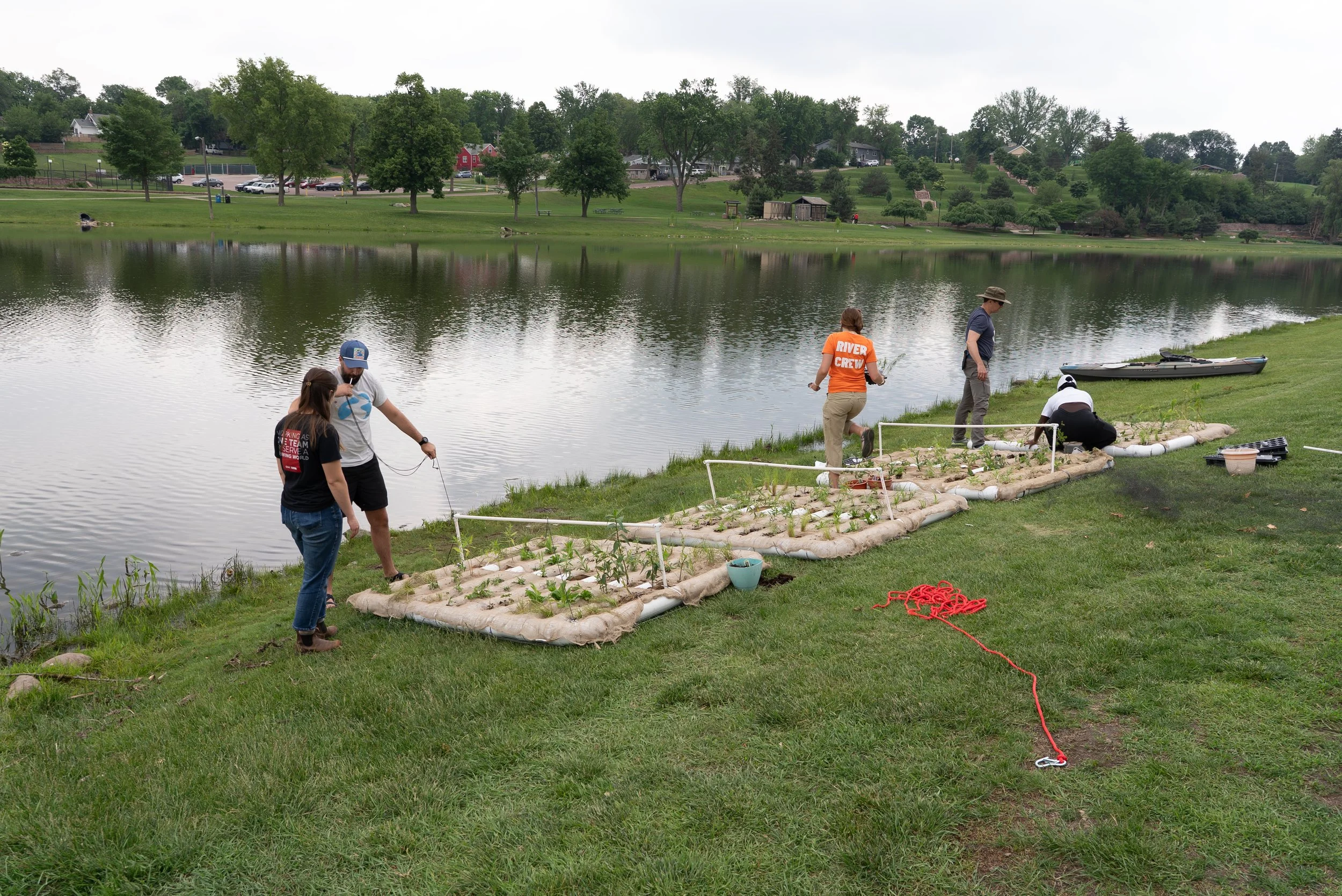
Preparing the Islands for Installation
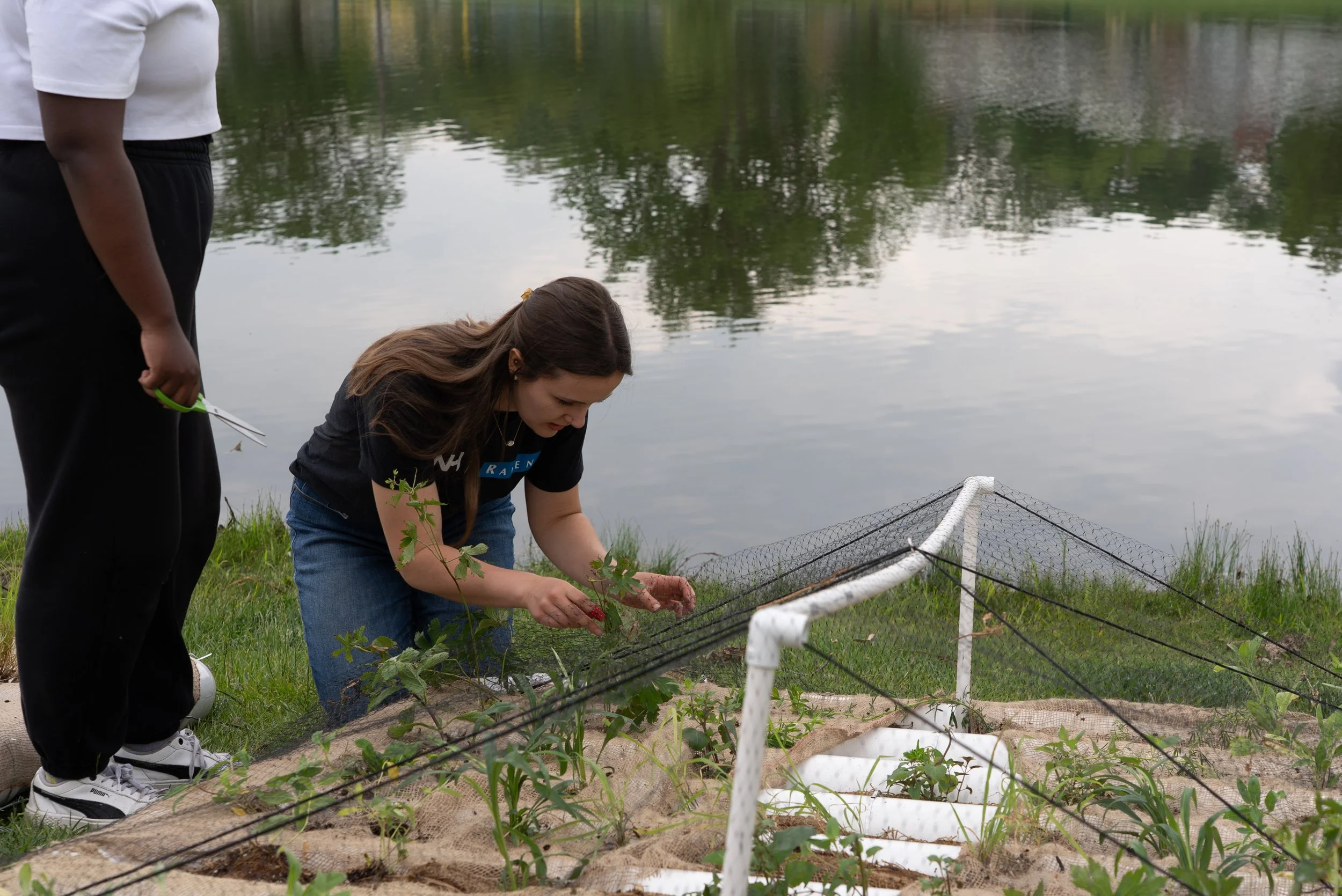
Placing Bird Netting on an Island
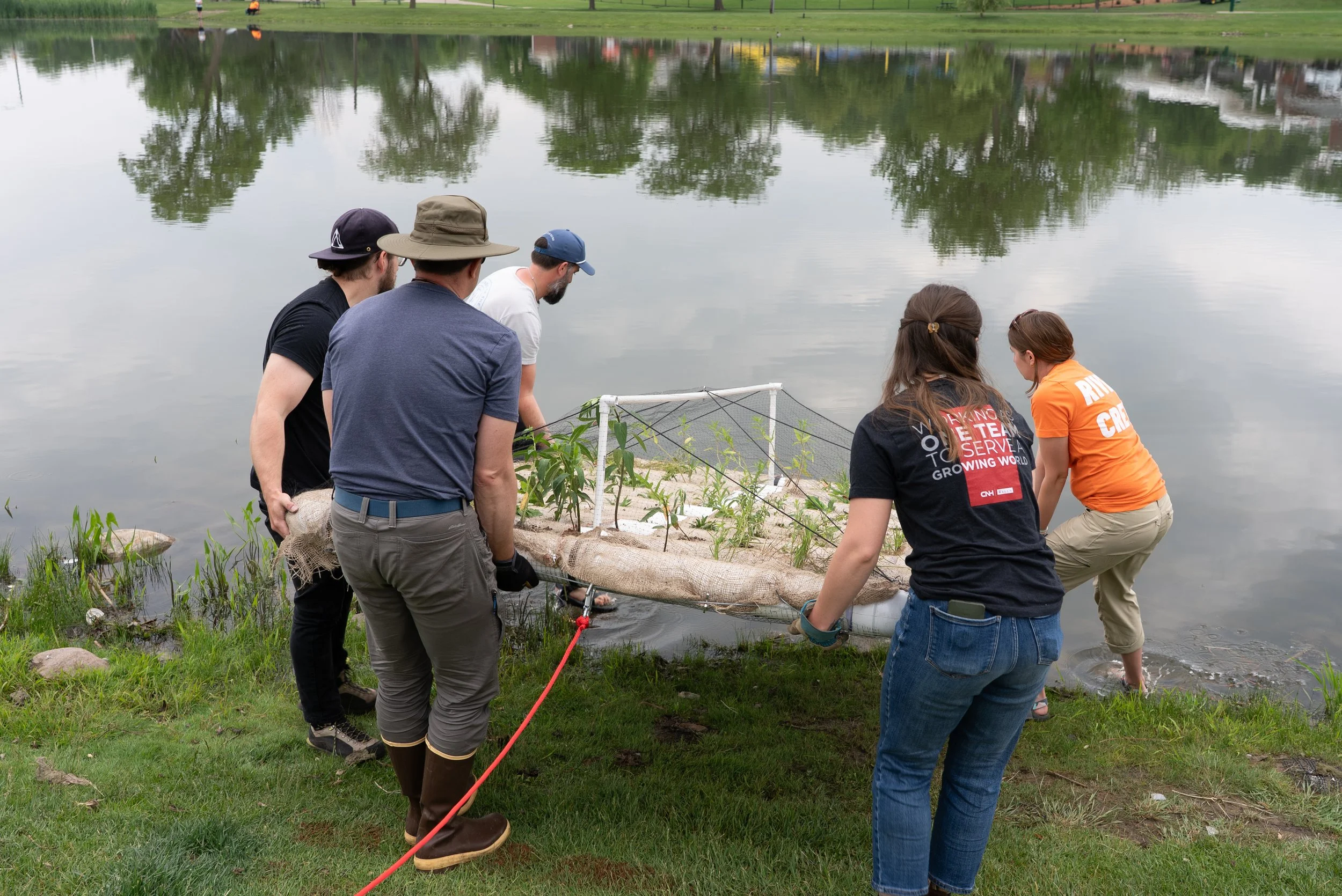
Carrying an Island to the Water
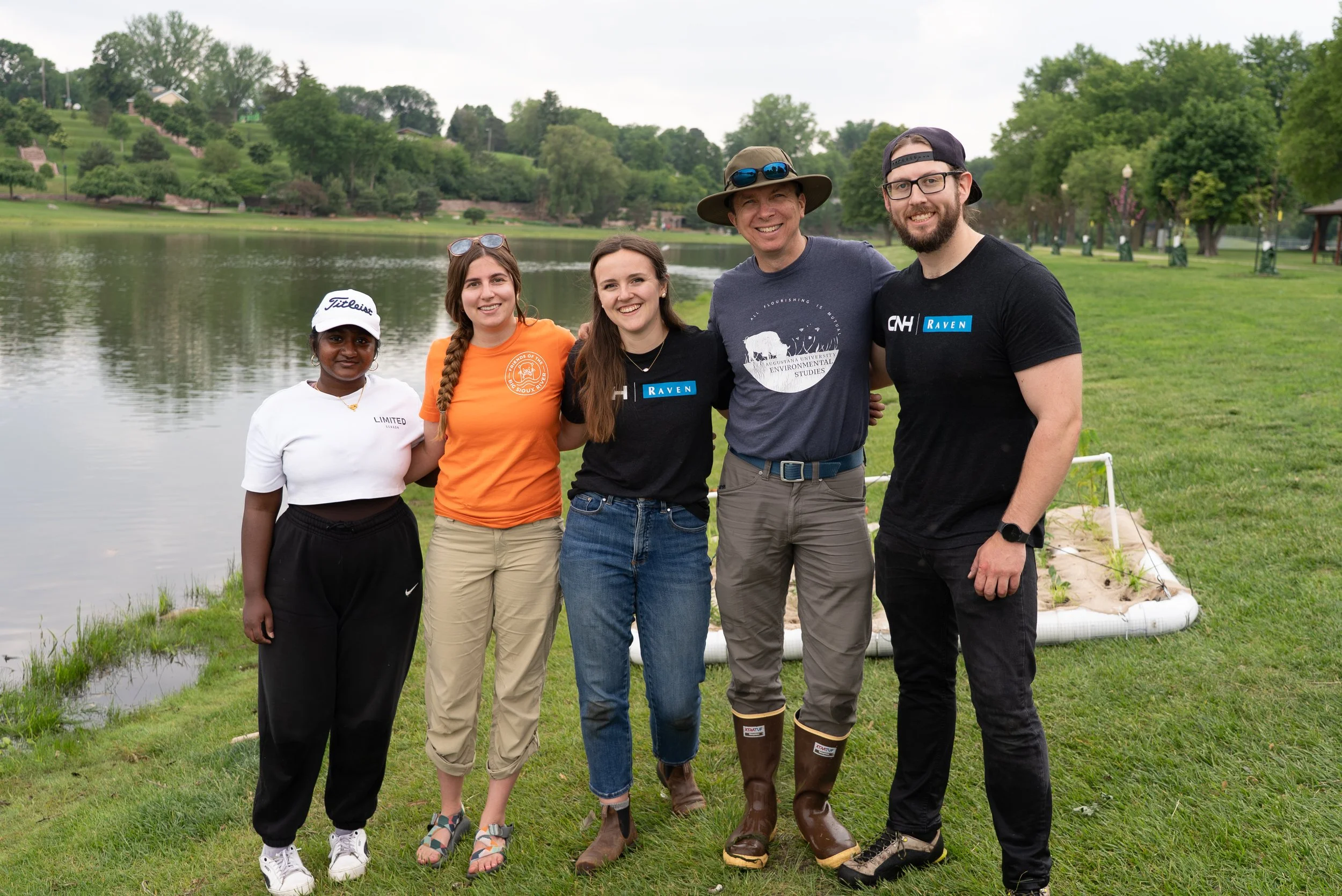
The Island Installation Team
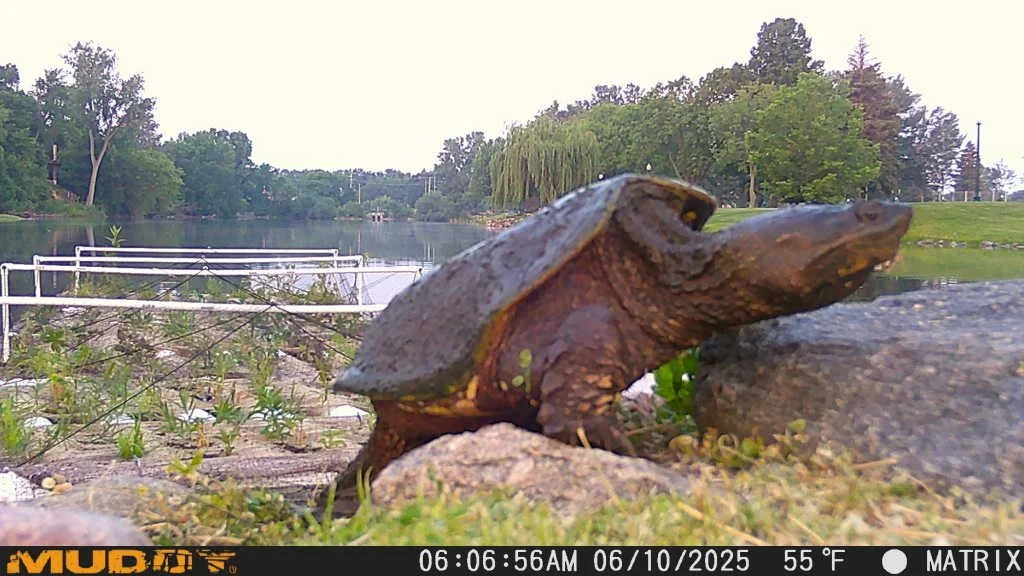
Snapping Turtle

Late Night Mallard
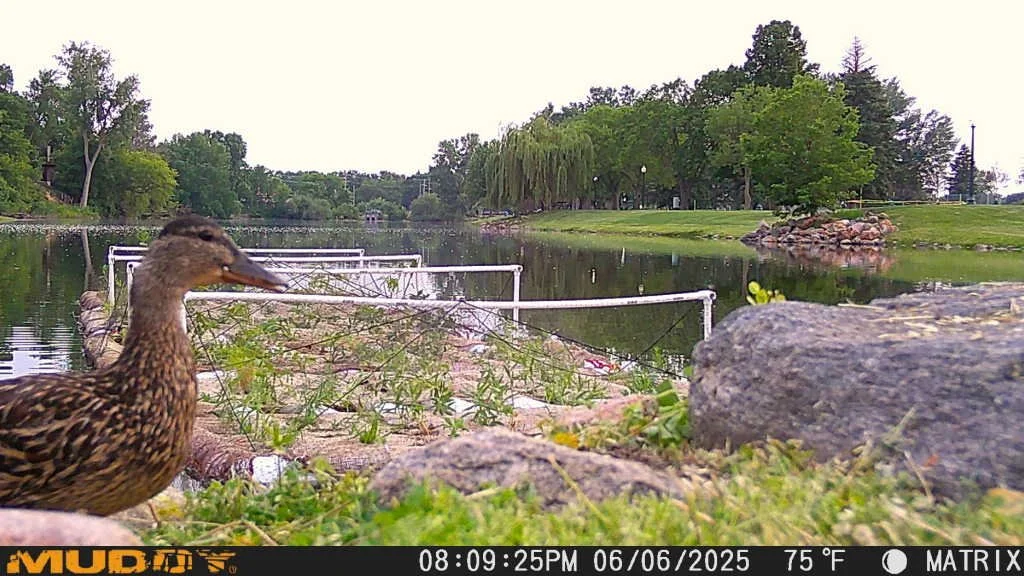
Daytime Mallard
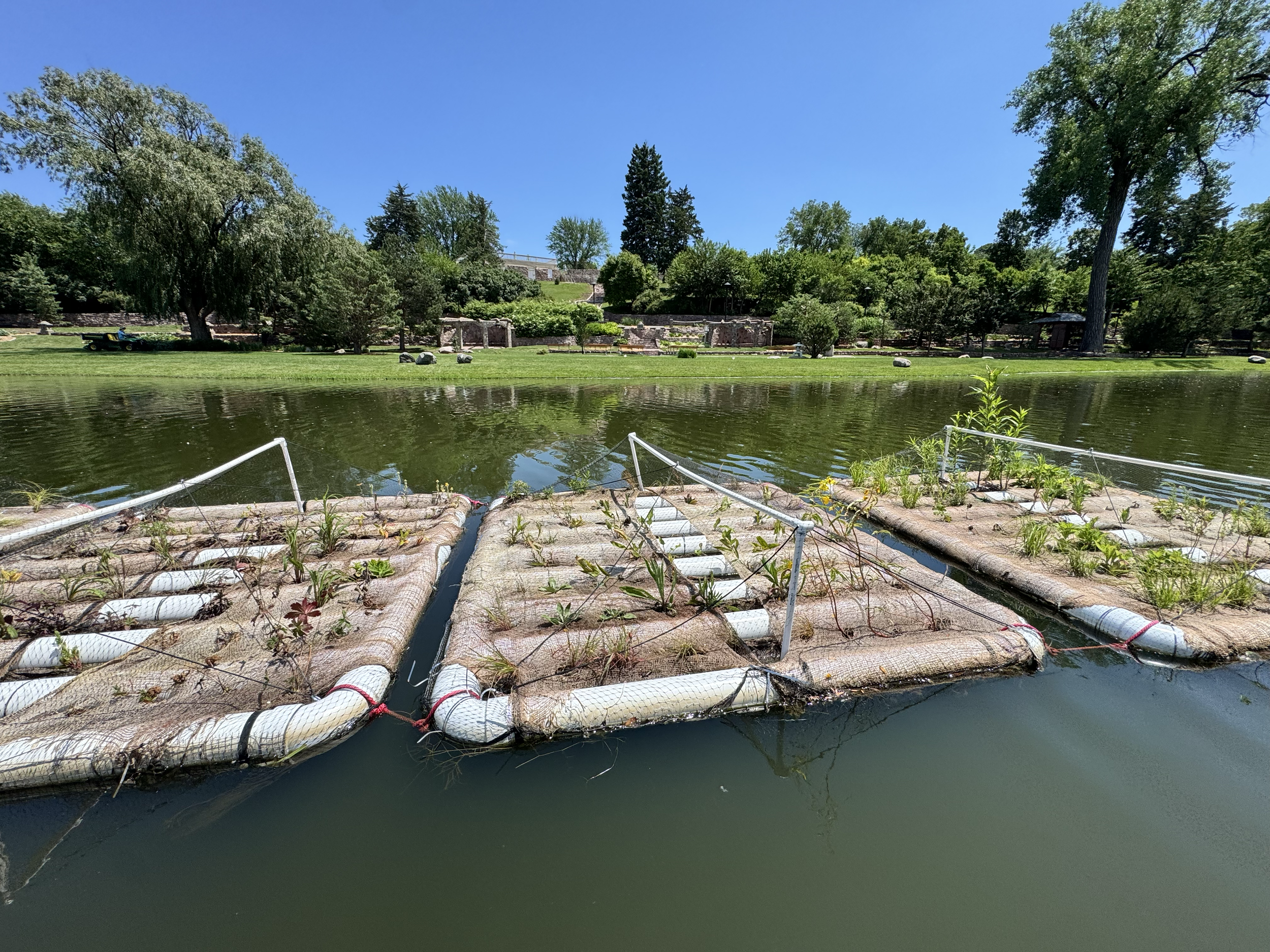
Plant Growth as of June 27, 2025
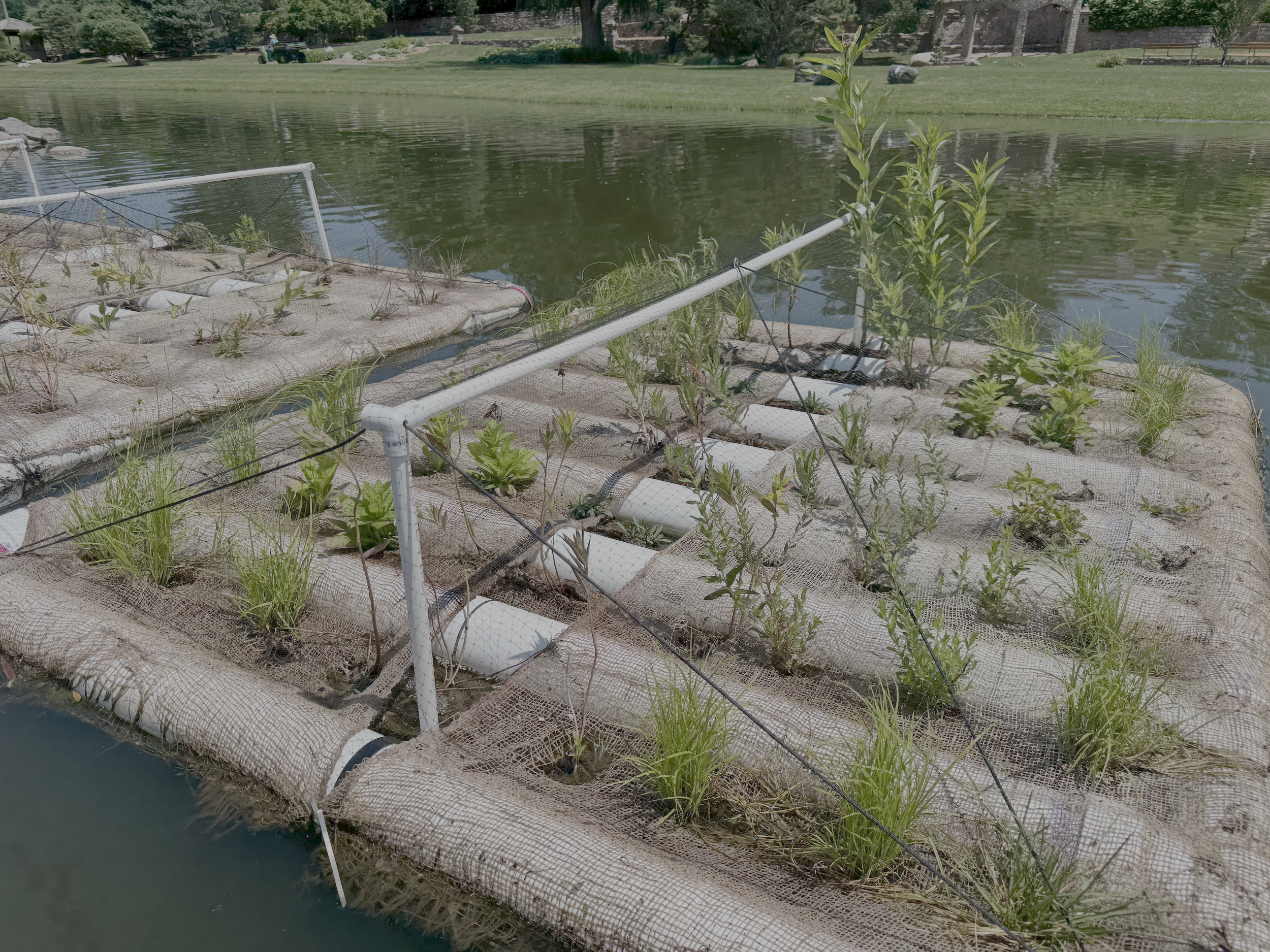
Plant Growth as of June 27, 2025
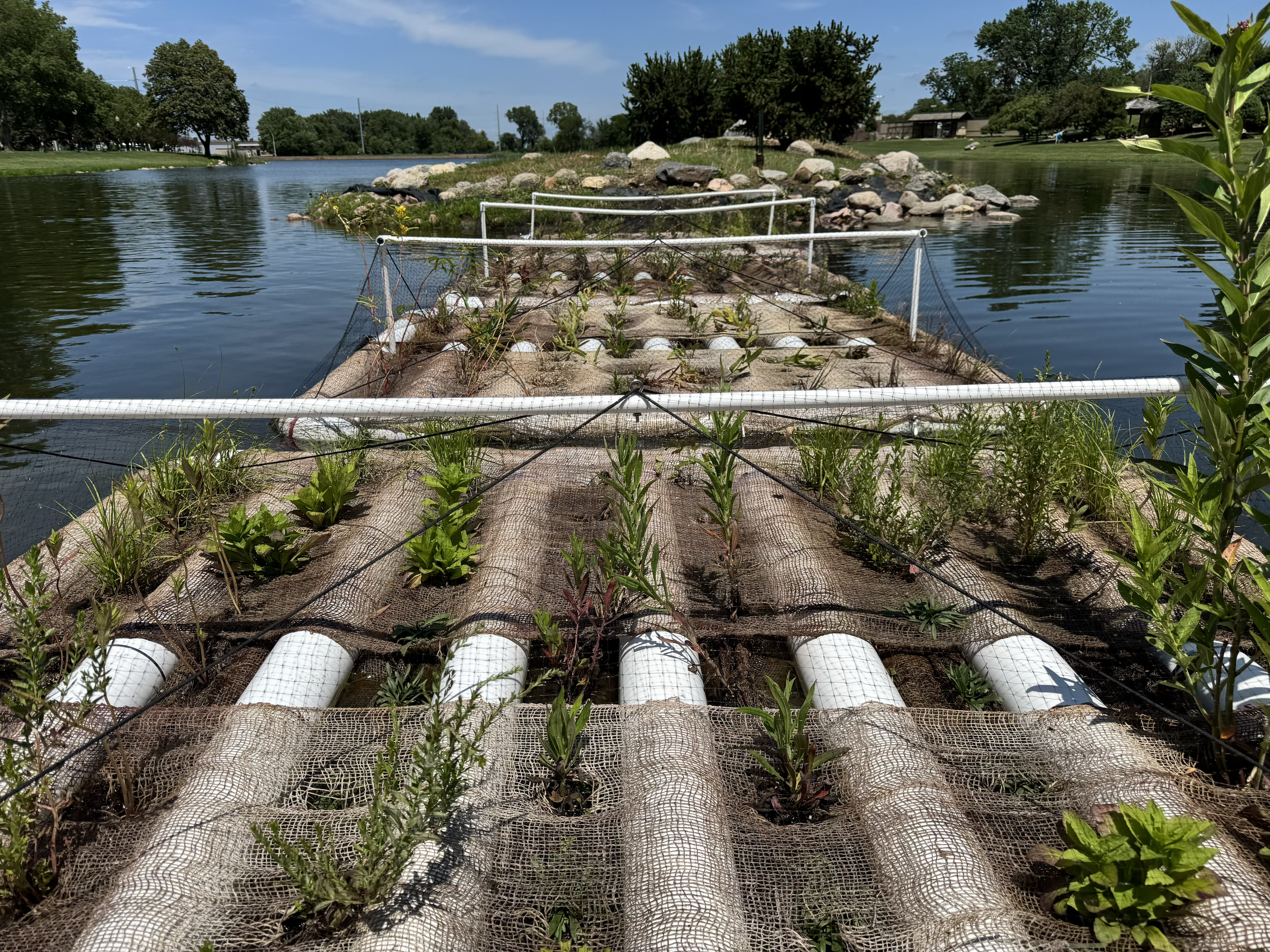
Plant Growth as of June 27, 2025
“We have an amazing opportunity to improve and enjoy the Big Sioux River right at our doorstep in Sioux Falls.
By working with FBSR and showing people the ecosystems and wildlife that exist in the river, we hope to inspire continuing action towards improved water quality, trash cleanup, and creating a space for future generations to spend time in nature and on the water.
The floating island project is uncharted territory, but it captures people’s attention and leads to valuable conversations regarding sustainability and water runoff practices. We look forward to applying the lessons learned from this pilot project towards beautifying and improving the watershed in the future.”
– John Waltz
Electrical Design Engineer, CNH Industrial
